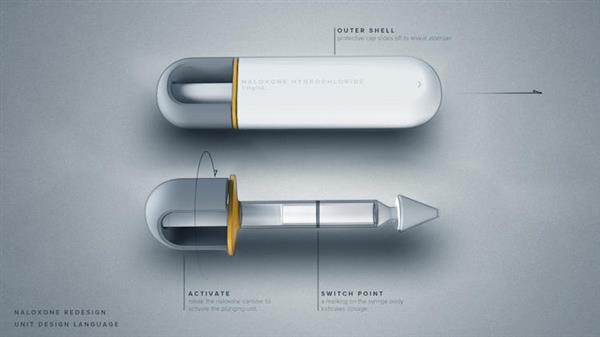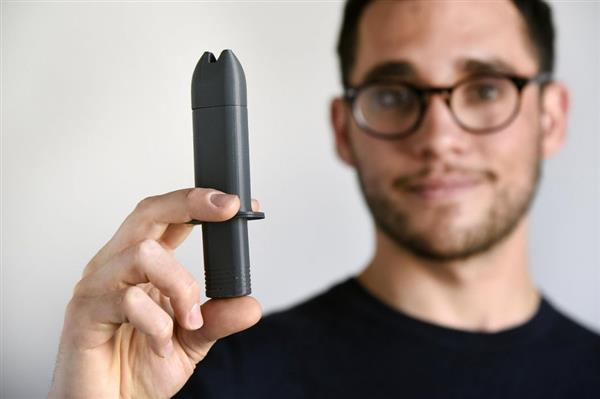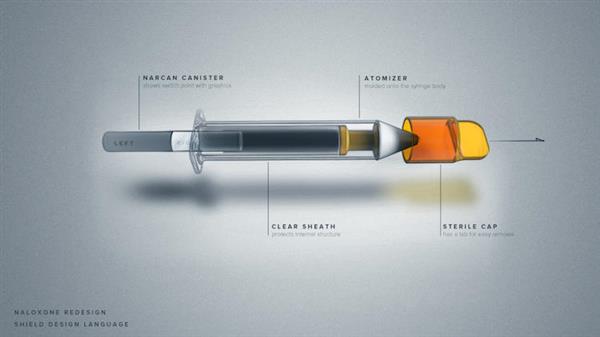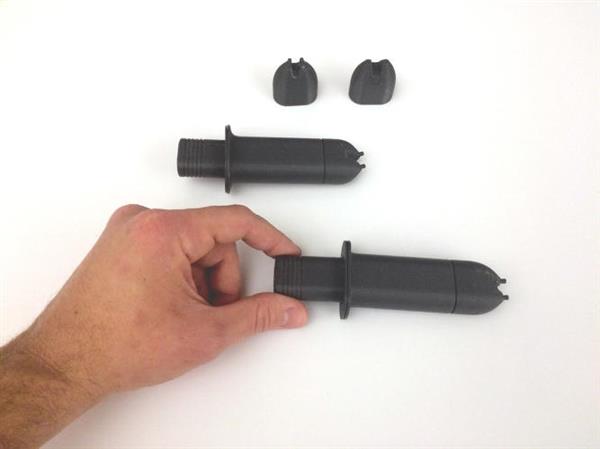Over the last decade, the United States population has been faced with the increasing use of the detrimental and highly addictive drug heroin. Last July, data from the U.S. Centers for Disease Control and Prevention claimed that, across the entire nation, heroin use was up a whopping 63%, while death by opiate overdose has nearly quadrupled over that same time period. One of the most widely-used treatments for drug overdose is naloxone nasal spray, and though the emergency antidote is cheap and effective, the method of administering the drug (in a multi-part kit) is considered to be extremely complicated. Now, I’m a firm believer in the fact that drug use should be looked at as a medical issue, rather than a criminal one, and that medical treatment needs to be more readily available for drug users.
Well, one 3D design firm from San Francisco, named Frog, is trying to do just that. Led by Frog’s industrial designer, Jonathan Grossman, the team has decided to take this glaring issue on the use of 3D printing, redesigning the standard naloxone nasal spray method to be more accessible, easy-to-use, and thus, more effective at saving lives. Grossman set out to conquer the difficulties of administering naloxone, which includes having to put together the standard kit on the spot (while likely under great stress), as well as the challenge in properly administrating the treatment even after the difficult assembly is completed. And so, the Frog team set out to recreate the treatment into a one-step, more user-friendly process, using 3D printing technology to rapidly prototype various models.

Looking at the problems regarding the traditional nasal spray, the Frog team needed to ensure that their device was pre-assembled, durable, and foolproof when being delivered to the patient. Thanks to the ability to prototype with 3D printing, Frog was able to experiment with and combine various features on different iterations, and even created a model for both professional and non-medically trained use. Grossman and the Frog team created the prototypes with 3D printed plastic, for the main body, and quality rubber for the plunger and plunger lid.
What the team discovered was that, not only was the 3D printed prototype more user-friendly, but it could also be quicker to use as well. For example, they designed prototypes with two connected syringes, allowing the naloxone to be administered simultaneously. All together, the 3D printed prototypes proved to be both faster and more accessible than standard models. This breakthrough design work couldn’t have come at a more critical time, as heroin use and opiate overdose continues to rise in communities across the United States, especially in Frog’s hometown of San Francisco. At the moment, Frog is looking for pharmaceutical and healthcare partners to help get their dual-nasal naloxone atomizer designer federally approved, out into the market, and saving lives as soon as possible.





